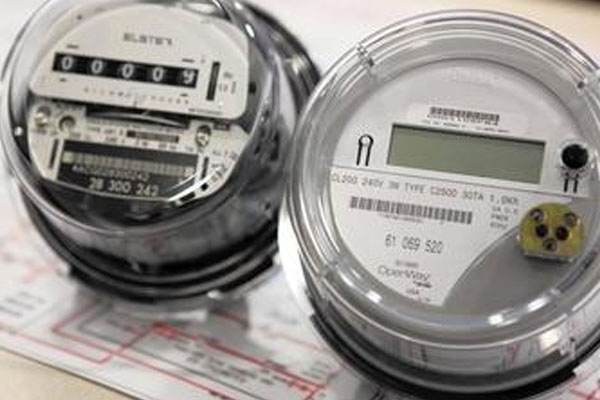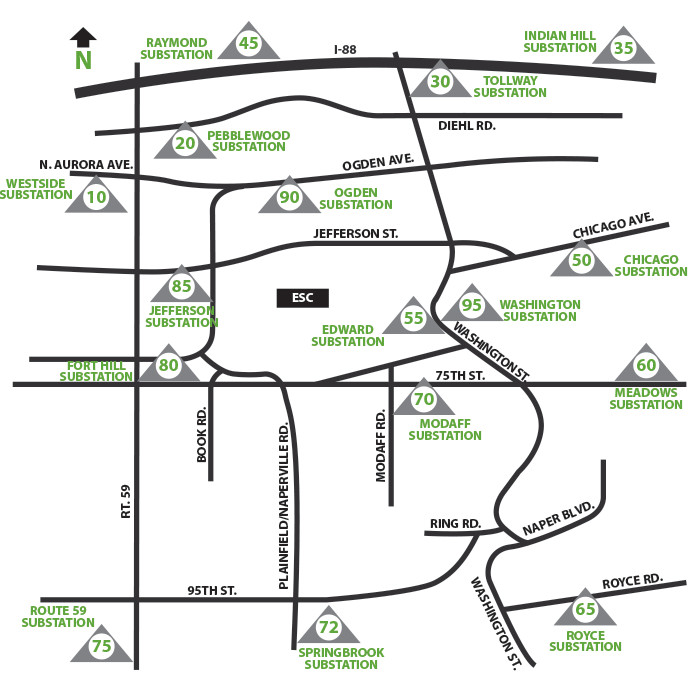
Electric
Genral Information
# OF METERS: 59,500
PEAK DEMAND: 399 MW
ANNUAL ENERGY USAGE: 1,550,000 MWh
SERVICES AREA: 46 Sq. Miles
TRANSMISSION: 138 kV - 19 Miles; 34.5 kV - 33 Miles
DISTRIBUTION: Overhead - 103 miles; Underground – 1,166 miles (94% URD)
We serve customers at the following voltage levels: 138 kV, 34.5 kV & 12.47 kV. Connected to ComEd Transmission Lines at 7 locations on South-Central, West and East Sides of the City.
Naperville V.S. ComEd System Average Interruption Duration Index (SAIDI)
Electric line crews are on duty 24 hours a day, 7 days a week. The City of Naperville’s response times to outages are anywhere from 15 to 30 minutes, depending on weather and traffic conditions.
Naperville Electric Utility crews are on duty 24 hours a day, seven days a week, 365 days a year. A 2017 report by the Electric Utility about the System Average Interruption Duration Index (SAIDI), a performance measurement indicator of service reliability, showed Naperville residents systemwide were without electrical power for only 22.24 minutes for the entire year, bettering the U.S. industry average of 54 minutes per customer.
Smart Grid Initiative
The Naperville Smart Grid Initiative is an investment in Naperville’s city-owned Electric Utility that modernizes the electric grid using the latest digital technology to increase reliability, reduce operating costs, improve efficiency and reduce waste for our customers.
The Smart Grid initiative included the installation of more than 57,000 smart meters in every home and business in the city along with the automation and upgrade of the electric grid backbone. Complete automation of the city’s electric grid provides automatic computerized meter readings, enhances system efficiency and reliability, streamlines customer billing and increases billing accuracy.
Benefits Of The Smart Grid Initiative
- Higher system reliability, which means fewer unplanned outages.
- Lower energy losses on the distribution system.
- More system monitoring points on the network, which leads to improved power quality. This can be very important for the city’s commercial customers.
- Increased system feedback, improves the city’s equipment maintenance plans and therefore improves operational efficiency.
- Lower meter reading expenses.

